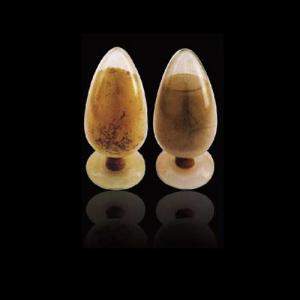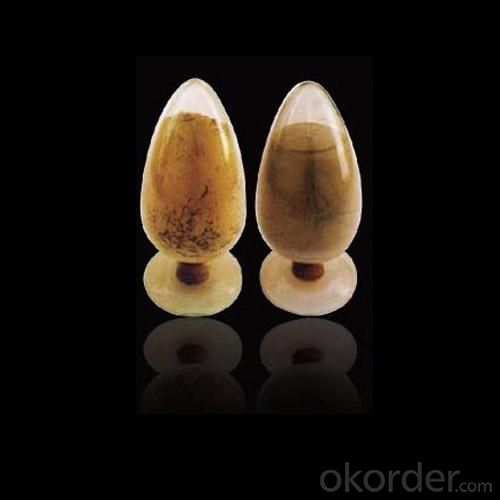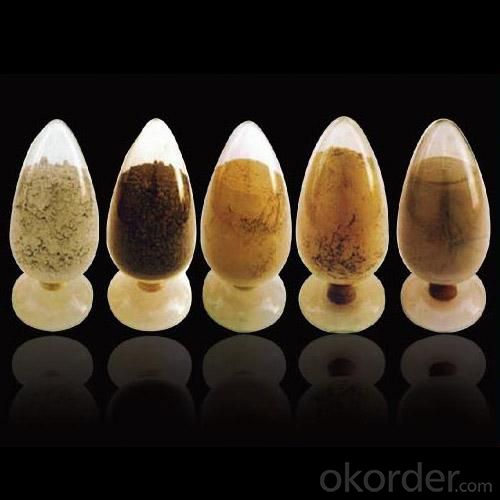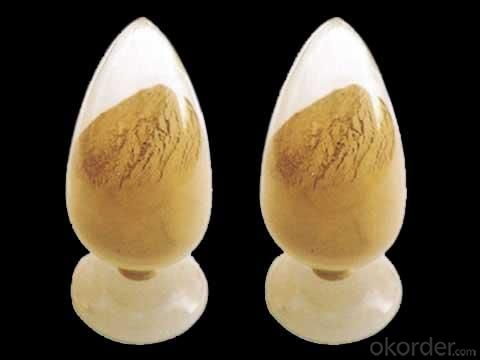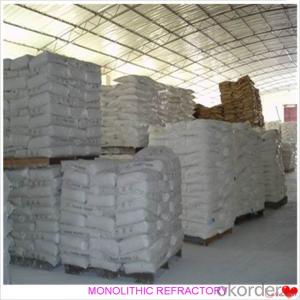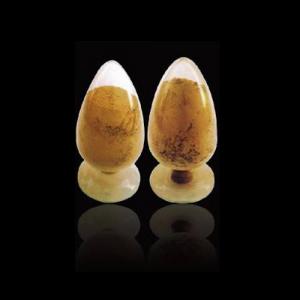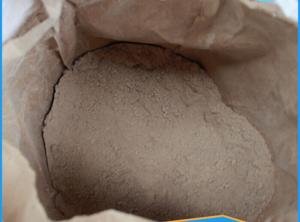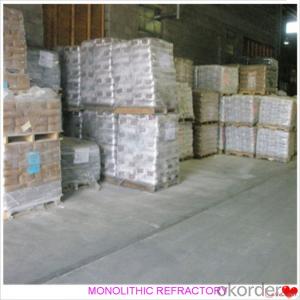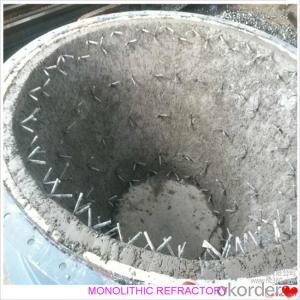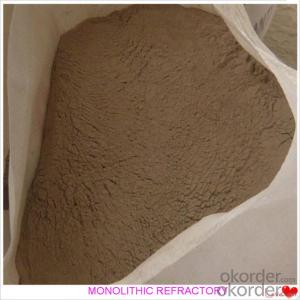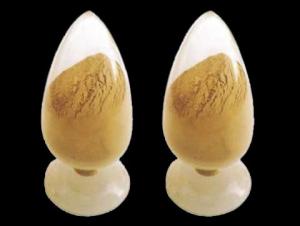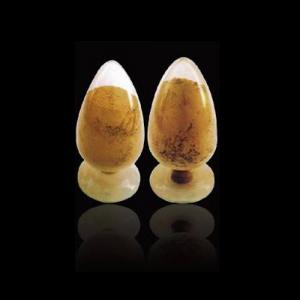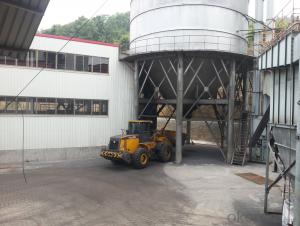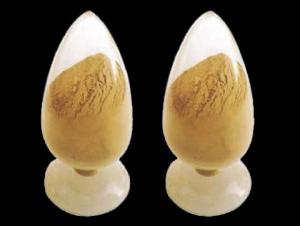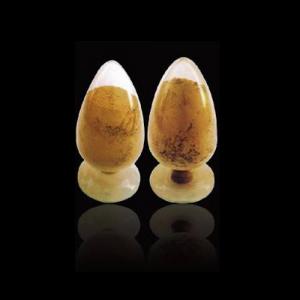Monolithic Refractories for Iron and Steel Industry - High Alumina Plastic Castable for Hot Blast Stove
- Loading Port:
- China Main Port
- Payment Terms:
- TT or L/C
- Min Order Qty:
- 2 MT m.t.
- Supply Capability:
- 5000 Tons Per Month m.t./month
OKorder Service Pledge
OKorder Financial Service
You Might Also Like
General Information of High Alumina Plastic Castable for Hot Blast Stove
ALRE high-alumina plastic castable for hot blast stove made strictly as per international standards, is known for its long operating life, excellent corrosion resistance and high refractoriness.
Technical data of High Alumina Plastic Castable for Hot Blast Stove
Item | High-alumina plastic castable | ||||
CJS-1600 | |||||
Al2O3 | % | ≥ | 55 | 65 | |
SiO2+C | % | ≥ | --- | --- | |
CaO | % | ≤ | --- | --- | |
MgO | % | ≥ | |||
SiO2 | % | ≤ | 40 | 30 | |
Bulk density g/cm3)≥ | 110℃×24h | 2.3 | 2.4 | ||
1000℃×3h | --- | --- | |||
1450℃×3h | --- | --- | |||
1500℃×3h | --- | --- | |||
110℃×24h | --- | --- | |||
1450℃×3h | --- | --- | |||
M.O.R. (MPa)≥ | 110℃×24h | 5-7 | 5-8 | ||
1000℃×3h | --- | --- | |||
1450℃×3h | --- | --- | |||
1500℃×3h | 10 | 12 | |||
Linear change after heating | 110℃×24h | -0.2~0 | -0.2~0 | ||
1000℃×3h | |||||
1450℃×3h | |||||
1500℃×3h | 0~+0.5 | 0~+0.5 | |||
Max. service temperature (℃) | 1500 | 1600 | |||
Using area | Linings of heating furnace of steel rolling, incinerator (Ramming construction method) | ||||
Production line and Packing of High Alumina Plastic Castable for Hot Blast Stove
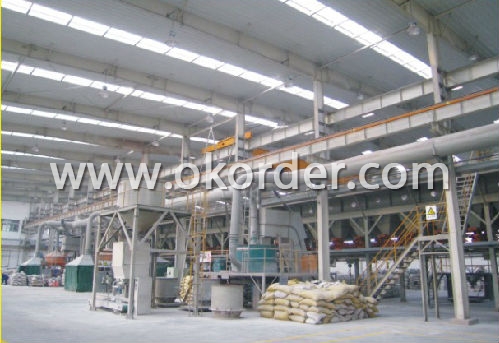
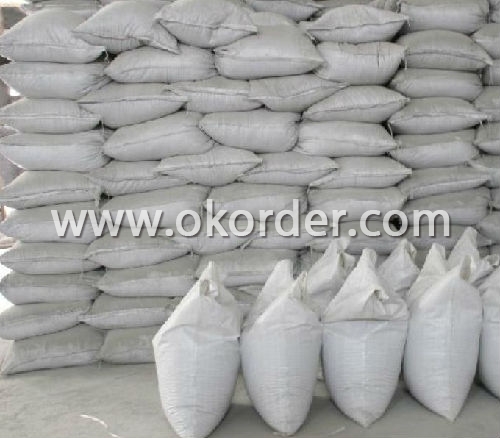
Feature of High Alumina Plastic Castable for Hot Blast Stove
Easy execution and mending
Excellent corrosion and scouring resistance of iron steel
Application of High Alumina Plastic Castable for Hot Blast Stove
ALRE high-alumina plastic castable for hot blast stove could be used widely for linings of heating furnace of steel rolling, incinerator.
- Q: How do monolithic refractories resist abrasion in the iron and steel industry?
- Monolithic refractories are specifically designed to resist abrasion in the iron and steel industry due to their unique composition and properties. These refractories are made from a single homogeneous material, which allows them to exhibit exceptional strength and durability when subjected to continuous abrasion. One of the key factors that contribute to the abrasion resistance of monolithic refractories is their high density. These refractories are manufactured with tightly packed particles, ensuring a solid and compact structure. This density helps to minimize wear and tear caused by the constant movement of materials, such as iron and steel, within the industry. Additionally, monolithic refractories often contain high levels of alumina, which is known for its excellent abrasion resistance. Alumina is a highly refractory material that can withstand high temperatures and mechanical stress without deteriorating. Its presence in monolithic refractories provides a protective layer that resists abrasion caused by the movement and impact of iron and steel particles. Moreover, monolithic refractories can be designed with specific additives and binders that further enhance their resistance to abrasion. These additives can include silicon carbide, mullite, or zirconia, which are known for their superior mechanical strength and ability to withstand wear. The binders used in the manufacturing process also contribute to the refractory's integrity and ability to withstand abrasion by providing a cohesive structure. Overall, the combination of high density, alumina content, specialized additives, and binders makes monolithic refractories highly resistant to abrasion in the iron and steel industry. These refractories are capable of withstanding the harsh conditions and constant movement of materials, ensuring longevity and efficiency in various applications within the industry.
- Q: What are the main factors affecting the thermal expansion of monolithic refractories?
- The thermal expansion of monolithic refractories is influenced by various factors. These factors comprise the type of refractory material, the temperature range, the chemical composition, and the physical structure of the refractory. To begin with, the thermal expansion behavior of a refractory is significantly determined by its type of material. Different types of refractories, such as alumina-based, silica-based, and magnesia-based refractories, possess varying coefficients of thermal expansion (CTE). For instance, alumina-based refractories generally exhibit a lower CTE in comparison to silica-based refractories. Consequently, the choice of refractory material holds great influence over its thermal expansion characteristics. Secondly, the thermal expansion of a refractory is affected by the temperature range to which it is exposed. As the temperature rises, the refractory material expands due to the absorption of thermal energy. However, different refractories demonstrate different expansion behaviors depending on temperature. Some refractories may exhibit a linear or near-linear expansion with temperature, while others may display non-linear or step-wise expansion. Hence, the temperature range of operation is a critical factor in determining the suitability of a refractory for a specific application. The chemical composition of the refractory also has an impact on its thermal expansion. The presence of various chemical elements and compounds in the refractory material can influence its expansion behavior. For instance, the addition of specific oxides, like magnesia or zirconia, can modify the CTE of the refractory. Similarly, impurities or variations in the chemical composition can introduce discrepancies in expansion characteristics among refractories of the same type. Lastly, the physical structure of the refractory, encompassing factors such as porosity, density, and microstructure, can influence thermal expansion. The existence of open or closed pores within the refractory can affect its ability to expand uniformly under thermal stress. The density of the refractory also plays a role, as denser refractories tend to have lower thermal expansion. Moreover, the microstructure, including grain size and orientation, can impact the overall expansion behavior of the refractory. To conclude, the primary factors influencing the thermal expansion of monolithic refractories include the type of refractory material, temperature range, chemical composition, and physical structure. A comprehensive understanding of these factors is crucial in selecting the appropriate refractory for a specific application to ensure optimal performance and durability.
- Q: How do monolithic refractories perform in aluminum holding furnace applications?
- Monolithic refractories perform exceptionally well in aluminum holding furnace applications due to their high thermal conductivity, excellent resistance to thermal shock, and superior mechanical strength. They can withstand the extreme temperatures and harsh chemical environments found in these furnaces, ensuring long-lasting and efficient operations. Additionally, monolithic refractories offer easy installation and maintenance, making them a preferred choice in aluminum holding furnace applications.
- Q: How do monolithic refractories resist chemical corrosion in iron and steel applications?
- Due to their unique characteristics and composition, monolithic refractories demonstrate high resistance to chemical corrosion in iron and steel applications. This resistance is attributed to various factors. One crucial factor is the utilization of top-notch raw materials. Typically, monolithic refractories are crafted from high-alumina or alumina-silica aggregates, which possess excellent resistance to chemical reactions. These aggregates are carefully selected to withstand the harsh conditions encountered in iron and steel applications, including exposure to molten metal, slag, and various chemical compounds. Furthermore, the binders employed in monolithic refractories play a vital role in their resistance to chemical corrosion. Common binders encompass clay, calcium aluminate cement, or colloidal silica. These binders not only hold the refractory materials together but also provide extra protection against chemical attack. They create a dense and impermeable structure, preventing corrosive substances from penetrating the refractory lining. Additionally, monolithic refractories often incorporate additives that enhance their chemical resistance. These additives, comprising antioxidants, anti-spalling agents, and various compounds, further safeguard the refractory lining from chemical attack. They neutralize corrosive elements, inhibit the formation of harmful compounds, and reduce the overall corrosion rate. Moreover, the unique installation method of monolithic refractories also contributes to their resistance to chemical corrosion. Unlike traditional brick refractories, monolithic refractories are installed as a single, continuous lining. This eradicates the need for joints or gaps that could potentially serve as weak points for chemical penetration. The monolithic nature of these refractories ensures a tight and seamless lining, reducing vulnerability to chemical attack. In summary, the combination of high-quality raw materials, effective binders, and beneficial additives, along with the monolithic installation technique, endows monolithic refractories with exceptional resistance to chemical corrosion in iron and steel applications. This resistance enables them to endure the harsh conditions encountered in these industries, ensuring the durability and efficiency of the refractory lining.
- Q: What are the specific requirements of monolithic refractories for blast furnace applications?
- Monolithic refractories used in blast furnace applications must possess specific attributes to withstand the extreme conditions within the furnace. These requirements include high thermal conductivity, excellent thermal shock resistance, superior erosion and abrasion resistance, and good chemical resistance to withstand the corrosive nature of molten iron and slag. Additionally, they should have low porosity to prevent the penetration of molten metal, high mechanical strength to withstand the weight of the burden, and good dimensional stability to maintain their shape and integrity during operation.
- Q: How do monolithic refractories improve the efficiency of ladle and tundish preheating furnaces?
- Monolithic refractories greatly contribute to the efficiency of ladle and tundish preheating furnaces. These refractories, made from a single material, are easily installed, repaired, and replaced, making them versatile and cost-effective. The efficiency of these furnaces is improved thanks to the outstanding thermal insulation properties of monolithic refractories. With low thermal conductivity, they effectively retain heat and prevent its escape. This insulation capability ensures an efficient preheating process, reducing energy consumption and costs by minimizing heat loss. Additionally, monolithic refractories possess high thermal shock resistance, which is crucial in ladle and tundish preheating furnaces. These furnaces experience rapid temperature changes during the pouring of molten metal, which can lead to cracking or failure of traditional refractories. However, monolithic refractories are specifically designed to withstand thermal shock, remaining intact and maintaining their insulating properties even in extreme conditions. This durability reduces downtime and maintenance requirements, thus enhancing overall efficiency. Furthermore, monolithic refractories provide a seamless and uniform lining surface, improving heat transfer within the furnace. The absence of joints or seams reduces the risk of heat leakage and ensures even distribution of heat throughout the lining. This promotes uniform heating of the ladle or tundish, allowing for more efficient preheating and better temperature control. In conclusion, the use of monolithic refractories in ladle and tundish preheating furnaces results in improved efficiency due to their exceptional thermal insulation properties, high thermal shock resistance, and ability to provide a seamless and uniform lining. These refractories minimize heat loss, reduce energy consumption, and enhance the overall performance of the preheating process.
- Q: What are the key properties of monolithic refractories?
- Monolithic refractories are a type of refractory material that are unshaped or shapeless, meaning they do not have a definite form like bricks or tiles. Instead, they are typically composed of a mixture of aggregates, binders, and additives that can be easily molded and installed in various industrial applications. The key properties of monolithic refractories are: 1. High temperature resistance: Monolithic refractories are designed to withstand extremely high temperatures, making them suitable for applications in industries such as steel, cement, glass, and petrochemicals. They can maintain their strength and structural integrity even at temperatures exceeding 3000 degrees Fahrenheit. 2. Thermal shock resistance: Monolithic refractories have the ability to resist thermal shock, which is the sudden change in temperature that can cause cracking or damage to the refractory. This property is essential in environments where rapid heating or cooling occurs, such as in furnaces or kilns. 3. Chemical resistance: Monolithic refractories exhibit excellent resistance to chemical attack and corrosion from molten metals, slag, gases, and other harsh substances. This makes them ideal for use in environments where they come into contact with acidic or alkaline materials. 4. Low porosity: Monolithic refractories have low porosity, which means they have a high density and are less permeable to gases and liquids. This property helps to prevent the penetration of molten metals or corrosive substances into the refractory, ensuring its longevity and performance. 5. Easy installation and repair: Unlike traditional refractory materials like bricks, monolithic refractories can be easily molded and installed in various shapes and sizes. They can be applied by spraying, casting, or ramming techniques, allowing for faster installation and reduced downtime. Additionally, they can be easily repaired or patched if any damage occurs. 6. Good mechanical strength: Monolithic refractories possess adequate mechanical strength to withstand the stresses and pressures encountered during their service life. This ensures their structural integrity, even under high load conditions. Overall, the key properties of monolithic refractories make them a versatile and reliable choice for a wide range of industrial applications where high temperature resistance, chemical resistance, and thermal shock resistance are required.
- Q: What are the different types of monolithic refractories used in the iron and steel industry?
- There are several types of monolithic refractories used in the iron and steel industry, including castables, ramming mixes, gunning mixes, and plastic refractories. Castables are a mixture of refractory aggregates, binders, and additives that can be poured and shaped into various forms. Ramming mixes are granular refractories that can be packed and tamped into place using a ramming tool. Gunning mixes are similar to ramming mixes but are applied using a gunning machine. Plastic refractories are moldable materials that can be shaped and installed by hand. These different types of monolithic refractories offer flexibility and ease of installation in various applications within the iron and steel industry.
- Q: How are monolithic refractories different from traditional refractory materials?
- There are several ways in which monolithic refractories differ from traditional refractory materials. Firstly, while traditional refractory materials are typically made from bricks, blocks, or tiles, monolithic refractories are made from a single continuous material. This means that they do not have any joints or seams, which can weaken traditional refractory structures. Secondly, installing monolithic refractories is much easier compared to traditional refractory materials. They can be easily shaped and applied on site, allowing for greater flexibility in design and construction. In contrast, traditional refractory materials require skilled labor and more time-consuming installation methods such as bricklaying. Additionally, monolithic refractories offer improved resistance to thermal shock. Because of their continuous structure, they can better withstand sudden changes in temperature without cracking or spalling. On the other hand, traditional refractory materials may be more susceptible to thermal shock damage. Another advantage of monolithic refractories is their ability to provide better insulation. They are often composed of lightweight aggregates or insulating fibers, which help to reduce heat loss and improve energy efficiency. Traditional refractory materials, while still capable of providing insulation, may not offer the same level of thermal efficiency. Lastly, monolithic refractories are more cost-effective. Their ease of installation, reduced labor requirements, and improved thermal performance contribute to lower overall project costs compared to traditional refractory materials. To sum up, monolithic refractories have a continuous structure, are easy to install, offer improved thermal shock resistance, provide better insulation properties, and are cost-effective. These characteristics make them the preferred choice in many industries that require high-temperature applications and thermal insulation.
- Q: What are the specific requirements of monolithic refractories for continuous casting applications?
- To withstand the extreme temperatures and thermal shock conditions experienced during continuous casting, monolithic refractories have specific requirements. First and foremost, these refractories must possess high thermal conductivity, enabling them to efficiently transfer heat away from the molten metal and maintain a stable casting temperature. This is crucial in preventing the formation of defects such as cracks, hot spots, and uneven solidification in the cast product. Secondly, monolithic refractories for continuous casting applications need to exhibit high refractoriness. This means they can endure the high temperatures of the molten metal without melting or deforming, ensuring the refractories can provide a protective lining and maintain their structural integrity throughout the casting process. In addition, these refractories must demonstrate excellent resistance to thermal shock. The continuous casting process involves rapid cooling and heating cycles, resulting in significant temperature differentials and inducing thermal stresses. Monolithic refractories with low thermal expansion and high thermal shock resistance can endure these conditions without cracking or spalling. Moreover, good erosion and corrosion resistance are vital requirements for monolithic refractories in continuous casting applications. The molten metal and slag can be highly corrosive and abrasive, causing wear and chemical attack on the refractory lining. Therefore, refractories with high resistance to erosion and corrosion are essential to ensure the longevity and stability of the lining. Lastly, monolithic refractories for continuous casting applications should possess good workability and ease of installation. This allows for efficient and precise lining installation, minimizing downtime during maintenance or repairs. Overall, the specific requirements for monolithic refractories in continuous casting encompass high thermal conductivity, refractoriness, thermal shock resistance, erosion and corrosion resistance, as well as good workability. Fulfilling these requirements guarantees that the refractories effectively safeguard the casting equipment and maintain the quality of the cast products.
1. Manufacturer Overview
| Location | Henan, China |
| Year Established | 2007 |
| Annual Output Value | Above US$ 200 Million |
| Main Markets | North America;Asia;Western Europe;Africa;Russia;Middle East |
| Company Certifications | ISO 9001:2008 |
2. Manufacturer Certificates
| a) Certification Name | |
| Range | |
| Reference | |
| Validity Period |
3. Manufacturer Capability
| a) Trade Capacity | |
| Nearest Port | Tianjin |
| Export Percentage | 20% - 30% |
| No.of Employees in Trade Department | 10-20 People |
| Language Spoken: | English; Chinese |
| b) Factory Information | |
| Factory Size: | Above 150,000 square meters |
| No. of Production Lines | Above 10 |
| Contract Manufacturing | Installation guide, OEM Service Offered |
| Product Price Range | High; Average |
Send your message to us
Monolithic Refractories for Iron and Steel Industry - High Alumina Plastic Castable for Hot Blast Stove
- Loading Port:
- China Main Port
- Payment Terms:
- TT or L/C
- Min Order Qty:
- 2 MT m.t.
- Supply Capability:
- 5000 Tons Per Month m.t./month
OKorder Service Pledge
OKorder Financial Service
Similar products
Hot products
Hot Searches
Related keywords
